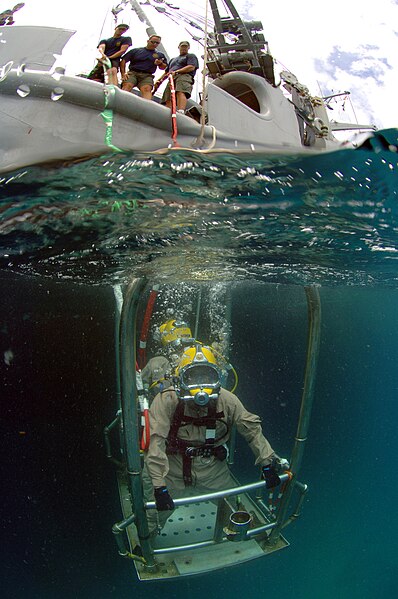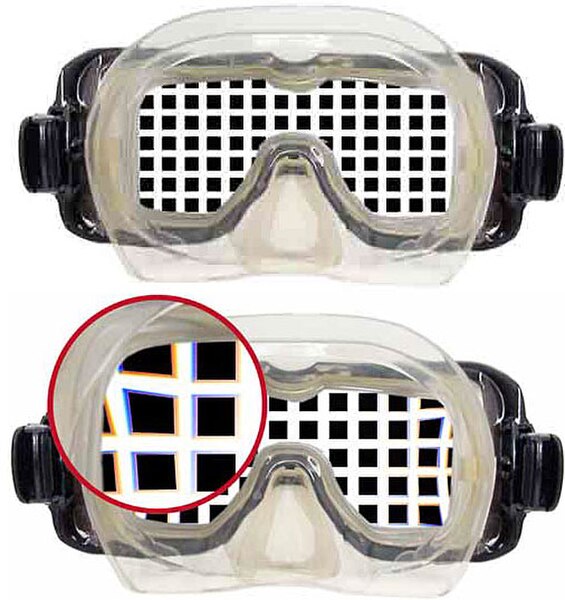In underwater diving, open water is unrestricted water such as a sea, lake, river, or flooded quarry. It is a contradistinction to confined water where initial skills training takes place. Open water also means the diver has direct vertical access to the surface of the water in contact with the Earth's atmosphere. Open water diving implies that if a problem arises, the diver can directly ascend vertically to the atmosphere to breathe air. Penetration diving—involving entering caves or wrecks, or diving under ice—is therefore not "open water diving". In some contexts the lack of a decompression obligation is considered a necessary condition for classification of a dive as an open water dive, as a decompression obligation is a procedural and safety restriction on immediate ascent to the surface, but this does not affect the classification of the venue as open water.
Tethered diver in blue water dive observing fauna in the water column
Marine scientist coordinates a blue water dive for 4 companions - each at the end of a rope tether and each rope kept taut by a weight and pulley system
Underwater diving, as a human activity, is the practice of descending below the water's surface to interact with the environment. It is also often referred to as diving, an ambiguous term with several possible meanings, depending on context.
Immersion in water and exposure to high ambient pressure have physiological effects that limit the depths and duration possible in ambient pressure diving. Humans are not physiologically and anatomically well-adapted to the environmental conditions of diving, and various equipment has been developed to extend the depth and duration of human dives, and allow different types of work to be done.
Surface-supplied divers riding a stage to the underwater workplace
Mild barotrauma to a diver caused by mask squeeze
Views through a flat mask, above and below water
Recreational breath-hold divers in basic equipment with floats and catch bags suitable for collecting lobster or shellfish






